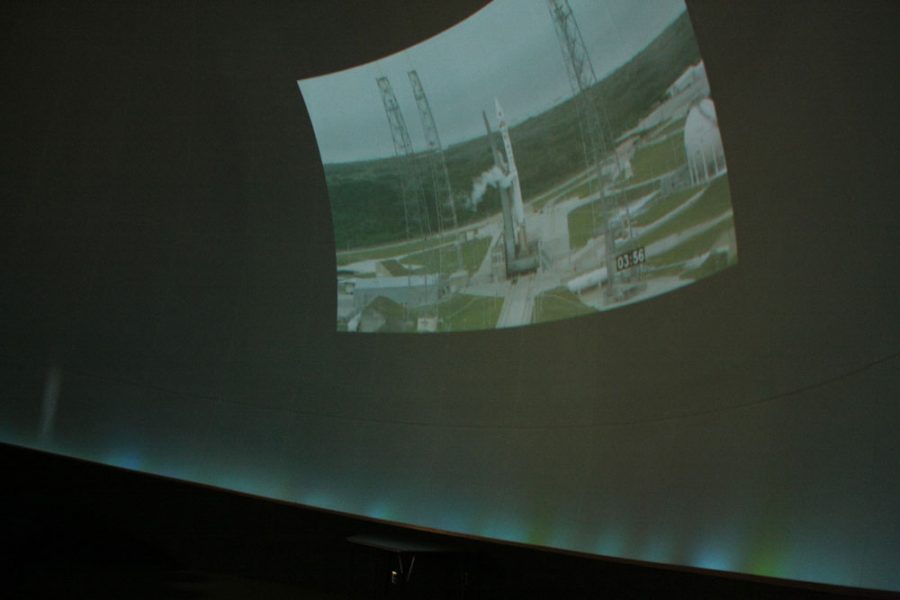
About 15 minutes before lunch, Melanie Knock, planetarium director, made the announcement that students could view the rocket launch in the Planetarium.
“I didn’t know whether it was going to go or not, so I waited until the weather looked good and the space craft looked good and that’s when I made the announcement,” Knocke planetarium said, “so I waited until the weather looked good and the space craft looked good and that’s when I made the announcement.
According to Knocke, there is an opportunity to send spacecraft to Mars every two years. Today, Nov. 18, marked the opening of a 20 day period for flight to mars, according to NASA,gov. MAVEN, which stands for Mars Atmosphere and Volatile Evolution, was launched aboard the United Launch Alliance Atlas V rocket from Launch Complex 41 at the Cape Canaveral Air Force Station in Florida. The Space Craft will arrive at Mars Sept. 22, 2014 and commence orbiting and collecting data.
“The rocket taking off was real, it was live. I thought it was awesome that it will arrive on mars nine months from now,” freshman Maranatha Prenger said. “The entire process of the launch is just so cool from the system check to the actual launch to to things that take place in the atmosphere.”
As the first mission solely dedicated to research of the upper atmosphere of mars, MAVEN will look into how much atmosphere has been lost over time by measuring how much atmosphere being lost to space, according to NASA.org. With NASA TV live streaming in the Planetarium, students had the opportunity to view a historic even and learn about MAVEN.
“The best part was that I could see it from Rock Bridge High School’s planetarium,” Prenger said. “I’m not sure I would have even known otherwise.”
The purpose of this mission, according to NASA.gov, is to take in information about the atmosphere of Mars in order to find out why the climate changed so dramatically. The craft will use a mass spectrometer and a magnetometer, built by Goddard, to “obtain detailed measurements of Mars’ upper atmosphere, ionosphere, planetary corona and solar wind,” according to NASA.org. The mission of MAVEN is different from any other mission before it.
“MAVEN is designed specifically; it’s a NASA mission. It’s designed specifically to study the upper atmosphere of the planet,” Knocke said. “It’s not going to study the ground so much as the clouds and just to get the idea of the composition of the upper atmosphere.”
“I just thought it would be cool,” Knocke said. “We have the technology. This is about space and this is a live launch… It actually went up on time, which is very rare, very rare for it to go up on time the first launch opportunity, so we lucked out to see it.”
By Emily Franke
What do you think of space exploration?





















































































